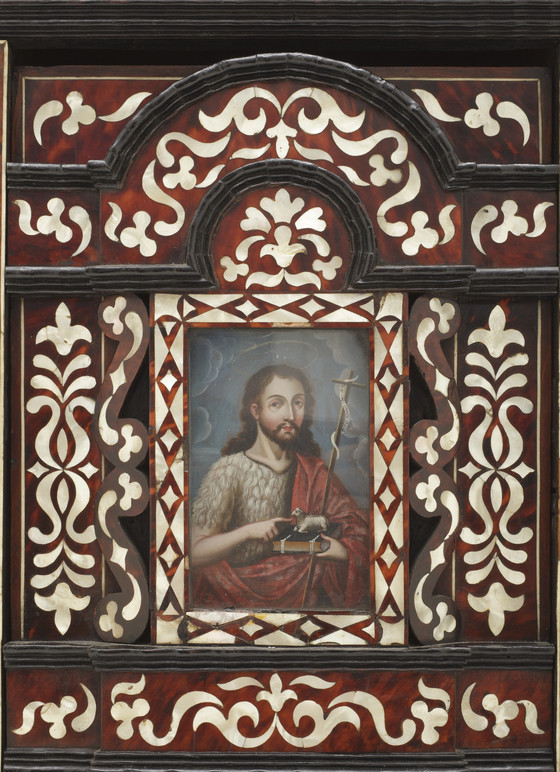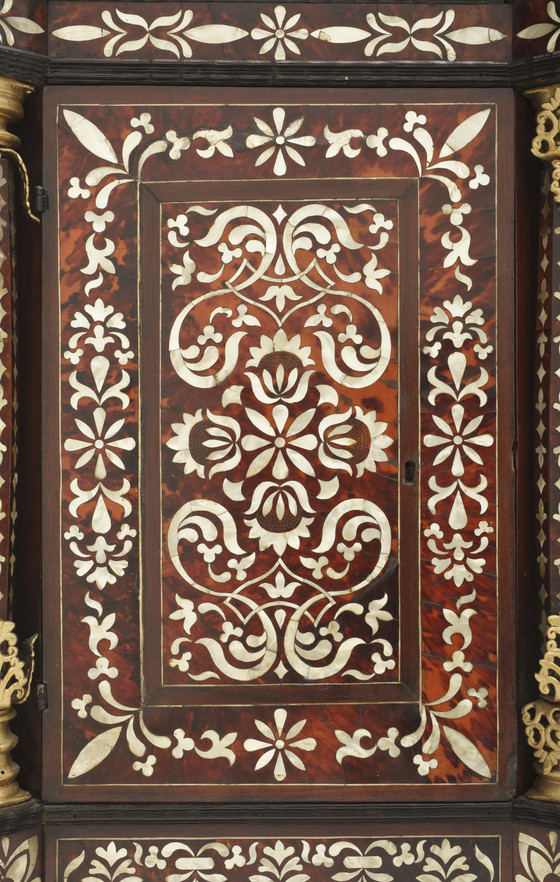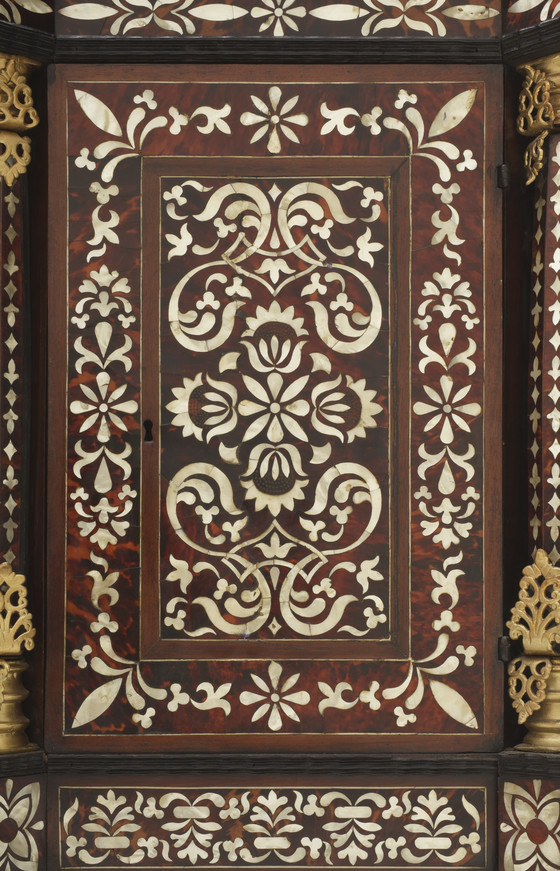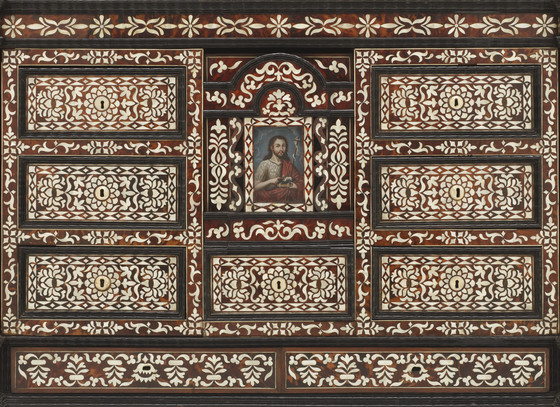Cabinet with Image of Saint John the Baptist (Contador con imagen de san Juan Bautista)




Please log in to add this item to your gallery.
View comments
Add a comment
Please log in to add comments.
Please log in to add tags.
* Nearly 20,000 images of artworks the museum believes to be in the public domain are available to download on this site.
Other images may be protected by copyright and other intellectual property rights.
By using any of these images you agree to LACMA's Terms of Use.
Cabinet with Image of Saint John the Baptist (Contador con imagen de san Juan Bautista)
Furnishings; Furniture
Wood, inlaid with tortoiseshell, mother-of-pearl, and ivory; oil painting on tin; glass; brass; copper fittings; and iron hinges
32 × 69 3/4 × 17 in. (81.3 × 177.2 × 43.2 cm)
Gift of Ronald A. Belkin, Long Beach, California (M.2013.130.1)
Not currently on public view


